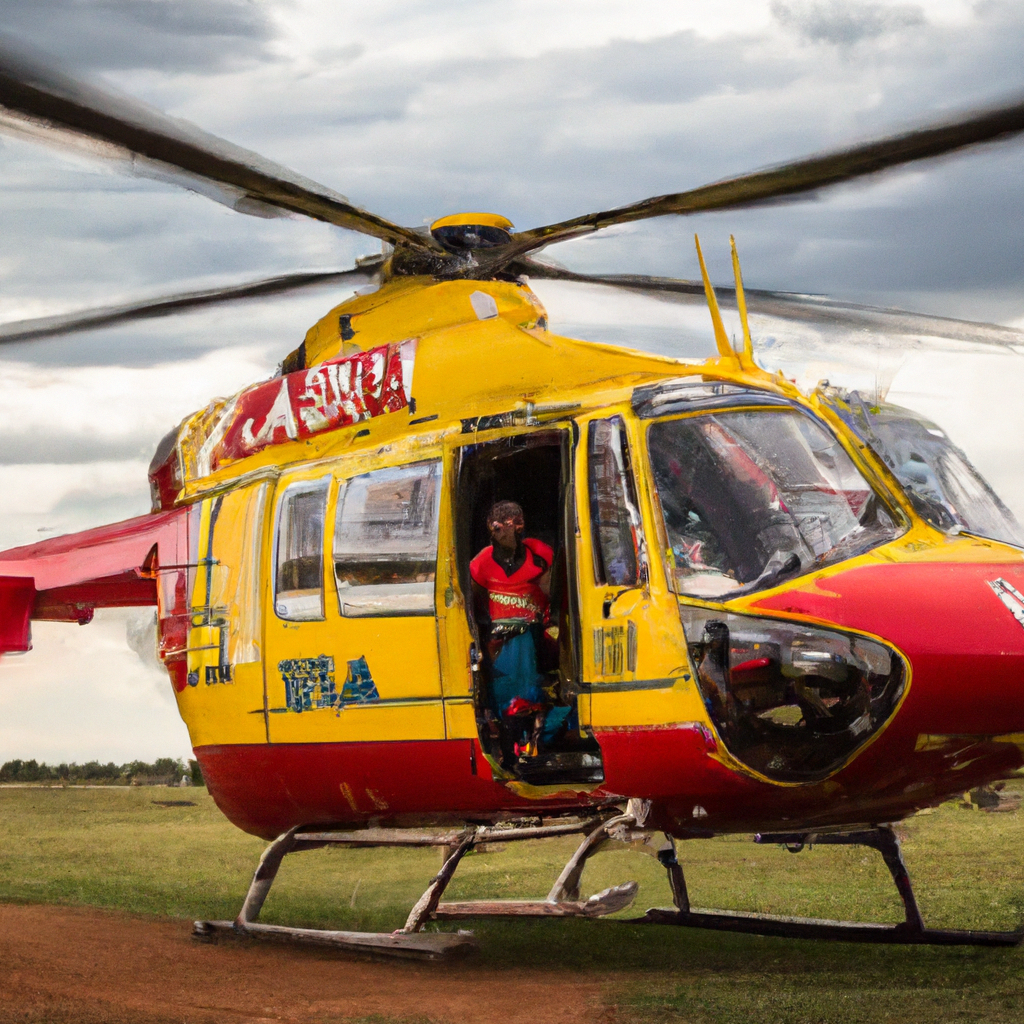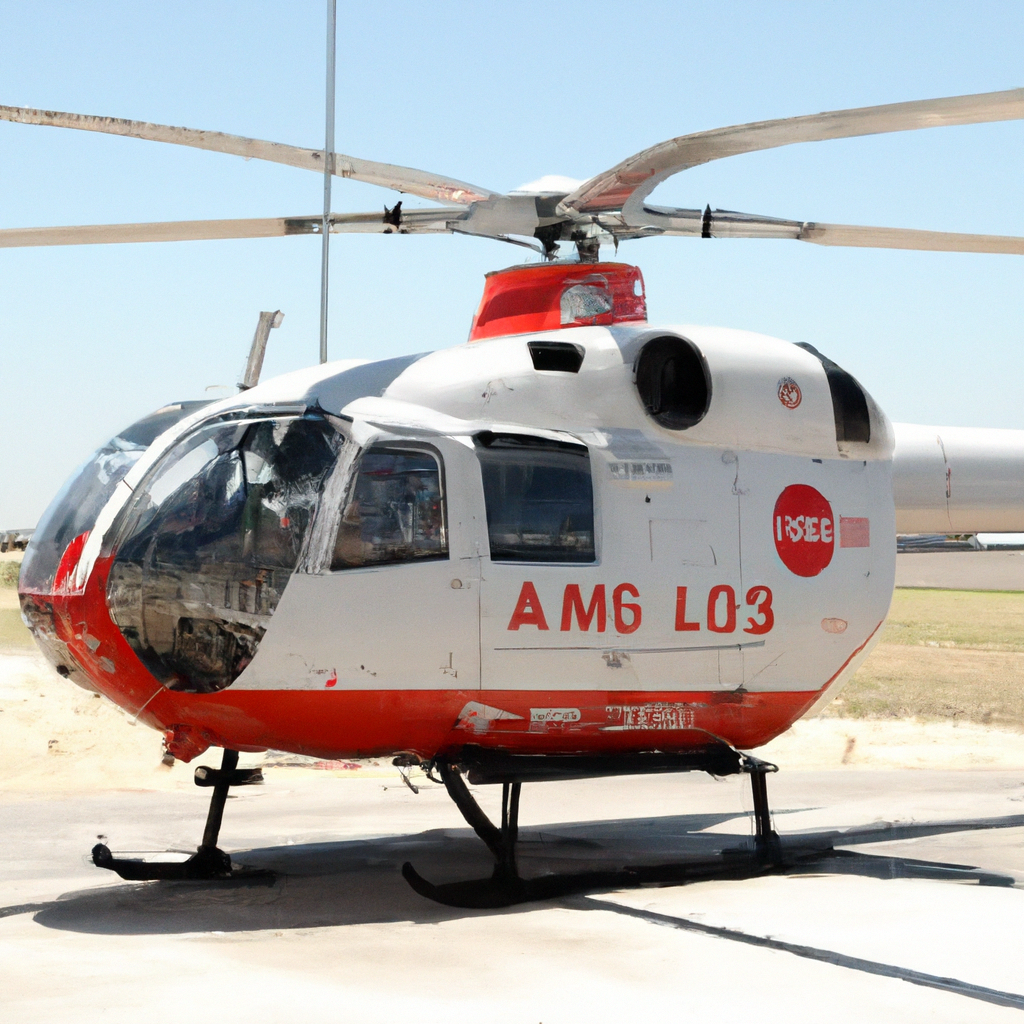Imagine a world where time and distance are no longer obstacles to receiving immediate medical care. This is the reality made possible by air ambulance services. With their ability to swiftly transport patients in need, air ambulances have become lifelines in emergencies and critical situations all around the globe. In this article, we will explore the global impact of air ambulance services and how they are revolutionizing healthcare by bridging the gap between patients and specialized medical facilities. From rural communities to remote islands, no location is too far for these aerial heroes to reach. So, fasten your seatbelts and get ready to take flight into the world of air ambulance services.

Improving Accessibility and Timeliness of Medical Care
When it comes to medical emergencies, every second counts. Air ambulance services play a crucial role in reducing travel time for critical patients, ensuring that they receive the care they need in a timely manner. Whether it’s a remote mountainous region or an isolated island, air ambulances can overcome geographical barriers and reach even the most inaccessible areas. This not only saves valuable time but also increases the chances of positive patient outcomes.
In remote and underserved areas, access to medical care can be a challenge. Air ambulance services bridge this gap by providing much-needed healthcare services to these communities. With their ability to land in small and remote locations, air ambulances can ensure that even those living in the most isolated areas have access to emergency medical care. This is especially critical in situations where ground ambulances might not be able to reach in a timely manner.
Enhancing Emergency Medical Services
In emergencies, time is of the essence. Air ambulances can significantly reduce response time by quickly transporting medical teams and equipment to the scene. This rapid response plays a vital role in the early stages of emergencies, where immediate medical intervention can be life-saving. By providing on-site medical care and stabilizing patients before they are transported to a hospital, air ambulances help optimize patient outcomes and increase the chances of survival.
In addition to reducing response time, air ambulances also facilitate rapid medical interventions during transport. Equipped with state-of-the-art medical equipment and staffed by highly trained medical professionals, these aircraft function as mobile intensive care units. They can administer critical care treatments and monitor patients throughout the journey, ensuring that no time is wasted when it comes to life-saving interventions.
Life-saving Services in Disaster Situations
During natural disasters, such as earthquakes, floods, or hurricanes, air ambulance services play a crucial role in providing life-saving assistance. These disasters often leave infrastructure severely damaged, making it difficult for ground ambulances to reach affected areas. Air ambulances can bypass roadblocks and transport medical personnel and supplies directly to the disaster site, where they can provide immediate medical aid to those in need.
Air ambulances also support humanitarian aid missions during times of crisis. Whether it’s delivering medical supplies, evacuating injured individuals, or transporting relief workers, these aircraft serve as a lifeline in disaster-stricken regions. Their ability to rapidly deploy and operate in austere environments makes them invaluable assets in providing critical medical support during humanitarian missions.

Critical Patient Transfers and Repatriation
When it comes to transferring critical patients between medical facilities, air ambulance services excel in ensuring a seamless transition. Whether it’s a specialized treatment center or a higher level of care required, air ambulances can transport patients safely and efficiently. This not only facilitates the continuity of care for complex cases but also ensures that patients receive the appropriate medical attention throughout the transport.
In cases where citizens require repatriation from abroad due to medical emergencies, air ambulance services provide a lifeline. These services coordinate with medical professionals and work closely with international authorities to safely transport patients back to their home countries. This process involves meticulous planning and coordination to ensure that patients receive the necessary medical care during the repatriation process.
Facilitating Organ Transplant Programs
Organ transplantation is a life-saving procedure that often requires timely transportation of organs. Air ambulance services play a crucial role in ensuring the timely delivery of organs from the donor to the recipient. With their ability to fly swiftly across long distances, air ambulances minimize waiting times for organ recipients, increasing their chances of a successful transplant. By efficiently coordinating transportation logistics, these services save more lives and contribute to the success of organ transplant programs.
Supporting Medical Tourism
Medical tourism has become increasingly popular, with patients seeking specialized care in other countries. Air ambulance services enable international patients to access these specialized medical services by providing safe and comfortable transportation. Whether it’s a complex surgical procedure or a specialized treatment unavailable in their home countries, air ambulances ensure that patients can reach their destinations quickly and comfortably. This accessibility contributes to the growth of the medical tourism industry while offering patients the opportunity to receive the best possible care.
Stimulating Economic Development
Air ambulance services have a significant impact on local economies. By creating employment opportunities within the aviation and healthcare industries, these services contribute to economic growth. Additionally, the establishment of air ambulance bases in different regions boosts local economies by generating job opportunities and attracting medical professionals to the area. Moreover, air ambulance services generate revenue from medical evacuations and repatriation, further stimulating economic development.
Collaboration with Healthcare Systems
Air ambulance services work hand in hand with hospitals and medical professionals to ensure seamless integration into existing healthcare systems. By partnering with hospitals, air ambulance services can efficiently coordinate patient transfers and ensure continuity of care. This collaboration strengthens emergency medical networks, allowing for better coordination and cooperation between ground and air-based medical services, ultimately enhancing patient outcomes.
Technological Advancements in Air Ambulance Services
Continuous advancements in aircraft design and medical equipment have revolutionized air ambulance services. The aircraft used for medical transportation are equipped with cutting-edge technology, ensuring patient safety and comfort during transport. From advanced life-support systems to specialized medical equipment, air ambulances are equipped to handle a wide range of medical emergencies. Furthermore, these services leverage telemedicine capabilities, enhancing communication with ground personnel and allowing for real-time consultation with medical professionals, even while in-flight.
Addressing Ethical and Legal Considerations
Air ambulance services are committed to upholding patient privacy and confidentiality. They adhere to strict privacy protocols and ensure that patient information is securely managed during transportation. Additionally, these services comply with international aviation regulations to guarantee safe and secure operations. Air ambulance services navigate complex cross-border medical laws and restrictions, working closely with relevant authorities to ensure compliance while providing life-saving care across different countries and jurisdictions.
In conclusion, air ambulance services have a significant global impact on healthcare accessibility, emergency medical services, disaster relief, critical patient transfers, organ transplant programs, medical tourism, economic development, collaboration with healthcare systems, technological advancements, and ethical and legal considerations. With their ability to overcome geographical barriers, respond rapidly in emergencies, and provide critical medical support, air ambulance services play a vital role in saving lives and improving patient outcomes worldwide.



